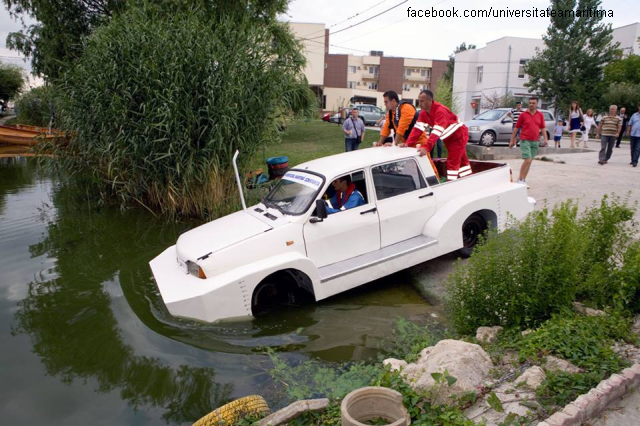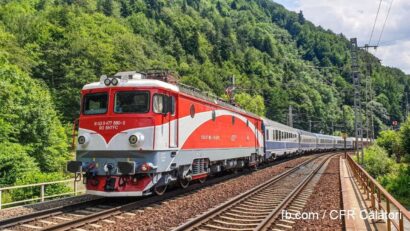The Story of Amphibious Dacia
Students with the Constanta School of Mechanical Engineering built the first amphibious Dacia.

România Internațional, 28.12.2014, 13:28
Today we will be talking about a student project which is in deep water, quite literally, as well it should be. It involved the first and only Dacia car to be amphibious, supposed to travel with the same ease on land and on water, with no changes needed.
The vehicle was created at the Constanta Maritime University School of Mechanical Engineering as part of a graduation project. A Double Cab Dacia 1310 was purchased by students, taken off the registry, then donated to the university. That’s how it all started. That new car had nothing added to it except a flooding shield. The idea, which would have probably thrilled passionate fishermen, came from a student in the navigation department, who wanted to come up with an original project. She was joined by three students of Mechanical Engineering.
Engineer Victor Heniuc, PhD, a researcher with the Maritime University, who supervised the project, told us how the idea came about and how it was put into practice:
“The students came up with the idea. They knew I supported wacky ideas, and seeing a similar project at Ovidius University, they wanted to do one better. So we got down to business. We put together a team, bought the car, we were so eager to do this that we put up our own money, because at that time there was no other way, we couldn’t claim that expenses. I put up half the money, the kids put up the other, then we donated the car to the school, in order to be able to refund the other expenses. This year, around March or April, we started the job as a graduation project.”
The project was ready mere days before the exam, and it cost around 10,000 lei (about 2,200 Euros). The university returned their expenses, and continues to support them, in order to popularise the invention. This is not the first such achievement for the school in Constanta. The students at Ovidius University come up every year with various vehicle prototypes with various propulsion systems in different combinations. Dr. Victor Heniuc told us what the novelty of the project was:
: “Amphibious is any organism that can live both under water and on dry land, such as frogs and salamanders. In the technical realm, it is a vehicle that can switch from land to water without any change, meaning it goes in the water and comes out directly, with no manoeuvre and any other technical changes. I want to emphasize this because the students told me that there are other Dacia cars whose wheels come off and are mounted on a flotation device with buoys and propellers, allowing the car to run over water. That would be a double system vehicle. Our amphibious vehicle goes into the water and comes out with no changes needed. The original thing is that we did this with a Double Cab Dacia, because there are plenty of amphibious vehicles in the world, from cars to buses. Our technical solutions were ones that we came up with ourselves, using whatever was available on the market. We finalized the project both theoretically and practically. The Dacia ran over water, and it became famous.”
As any prototype, the amphibious Dacia needs adjustments. At its first test run, when it reached 7 kph on water, it pushed up a wave ahead of it that flooded the engine, so the first modification was a wave breaker in front, which goes up when the vehicle gets into the water. According to the students who ran the project, who are also continuing it during their undergraduate years, said that they were the only ones to get a straight 10 out of 10 grade on their project, and that they were proud to do something above and beyond. The Dacia was launched with driver and passengers at the year-opening festivities at the university this year, on Siutghiol Lake.
This water-worthy Dacia is a gold mine, its creators believe. Here is Dr. Victor Heniuc once again:
“If it reaches mass production it could be very useful, especially in areas prone to flooding, allowing interventions in areas temporarily isolated by water. It might even be used in the Danube Delta to get supplies to isolated areas or as an emergency vehicle.”
It only remains for the amphibious Dacia to be approved for registration, both as a road and a water vehicle.






























